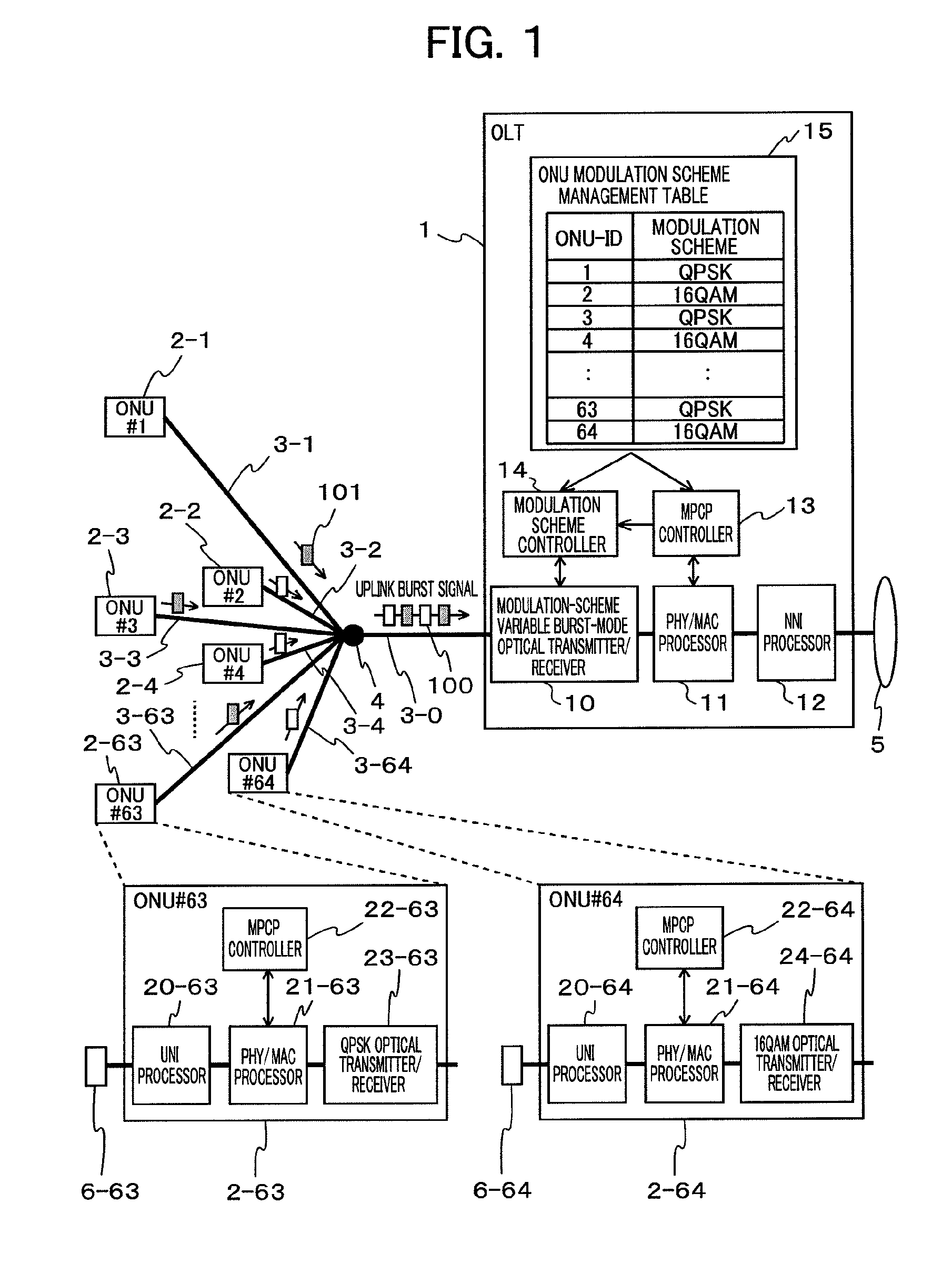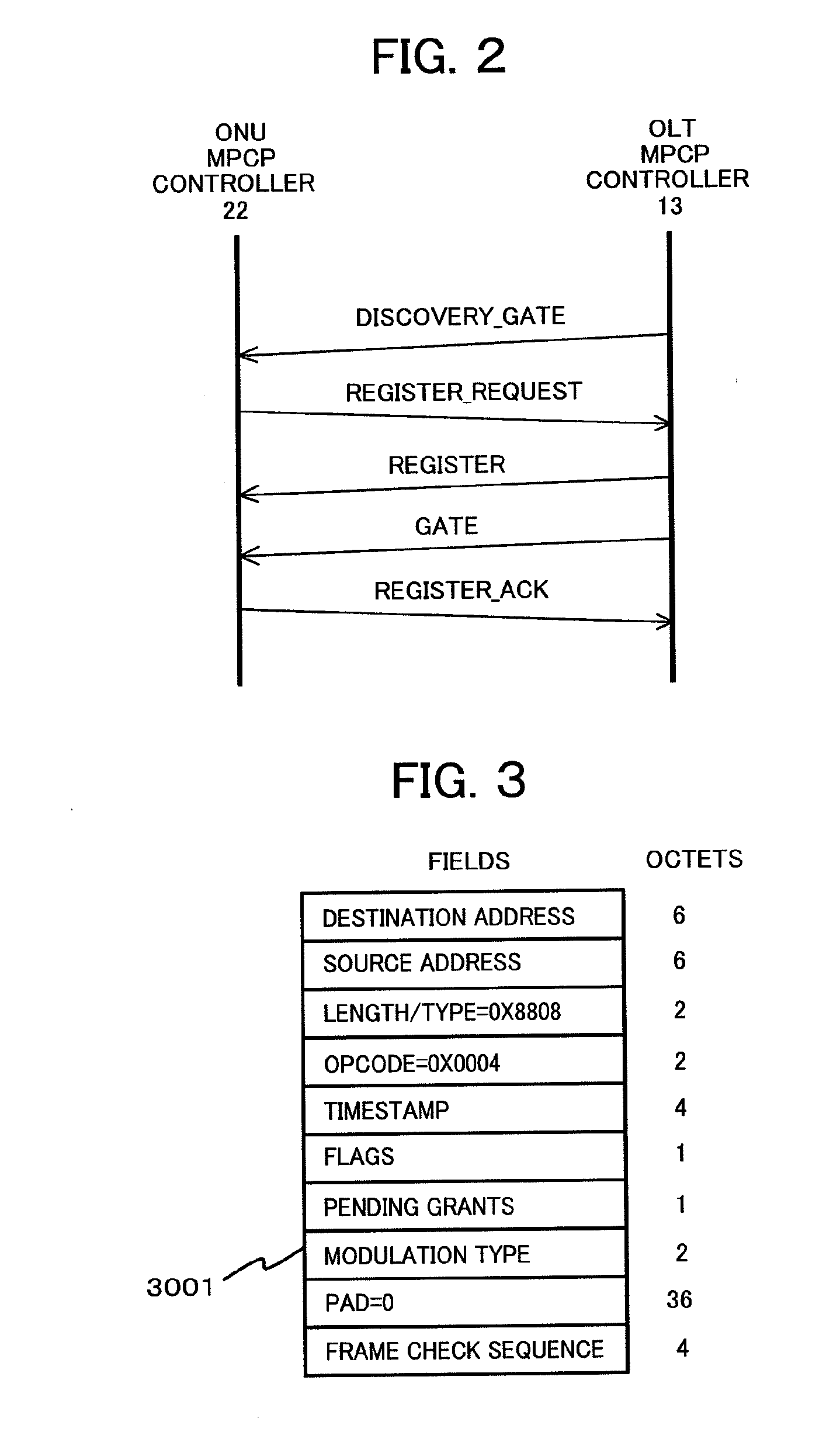Dynamic bandwidth allocation method, olt, and PON system
a bandwidth allocation and dynamic technology, applied in the field of optical communication system, can solve the problem of not defining the algorithm for dynamic bandwidth allocation, and achieve the effect of reducing power consumption and improving the efficiency of using uplink signal bandwidth
- Summary
- Abstract
- Description
- Claims
- Application Information
AI Technical Summary
Benefits of technology
Problems solved by technology
Method used
Image
Examples
first embodiment
[0028]In this embodiment, an exemplary optical access system (PON system) is described in which plural kinds of ONUs for different modulation schemes coexist.
[0029]FIG. 1 is a system configuration diagram of an optical access network according to PON (PON system) including two kinds of coexisting ONUs for different modulation schemes. The optical access network of FIG. 1 includes an OLT 1 and plural ONUs 2. The OLT 1 and the ONUs 2 are connected to each other via optical fibers 3. An optical fiber 3-0 from the OLT 1 branches into 64 optical fibers 3-1 to 3-64 at an optical splitter 4 and are then connected to a total of 64 ONUs 2 (2-1 to 2-64) for a plurality kinds of modulation schemes. In this embodiment, an ONU 2-63 for QPSK and an ONU 2-64 for 16QAM are exemplified. The OLT 1 is also connected to a network 5 and the ONU 2 is connected to a terminal 6. Thus, the PON system of this example provides an environment where the terminal 6 can communicate with a given device within the ...
second embodiment
[0053]Next, the second embodiment is described in which the modulation scheme provided in the ONU is not fixed, but a single ONU can handle plural kinds of modulation schemes.
[0054]FIG. 7 is a diagram showing an exemplary entire configuration of an optical access system according to the second embodiment. As shown in FIG. 7, the OLT 1 is the same as that in the first embodiment except that the modulation schemes in the ONU modulation scheme management table 15 is dynamically changeable or variable, and therefore the description of the OLT 1 is omitted. The ONU 2-4 shown in FIG. 7 newly includes a multiple modulation scheme support optical transmitter / receiver 25-4 and a modulation scheme controller 26-4. Although not shown in FIG. 7, all the ONUs 2 may support multiple modulation schemes like the ONU 2-4 or only some of the ONUs 2 may support multiple modulation schemes.
[0055]In a case where the ONU supports multiple modulation schemes, in the discovery process described referring t...
PUM
 Login to View More
Login to View More Abstract
Description
Claims
Application Information
 Login to View More
Login to View More - R&D
- Intellectual Property
- Life Sciences
- Materials
- Tech Scout
- Unparalleled Data Quality
- Higher Quality Content
- 60% Fewer Hallucinations
Browse by: Latest US Patents, China's latest patents, Technical Efficacy Thesaurus, Application Domain, Technology Topic, Popular Technical Reports.
© 2025 PatSnap. All rights reserved.Legal|Privacy policy|Modern Slavery Act Transparency Statement|Sitemap|About US| Contact US: help@patsnap.com



